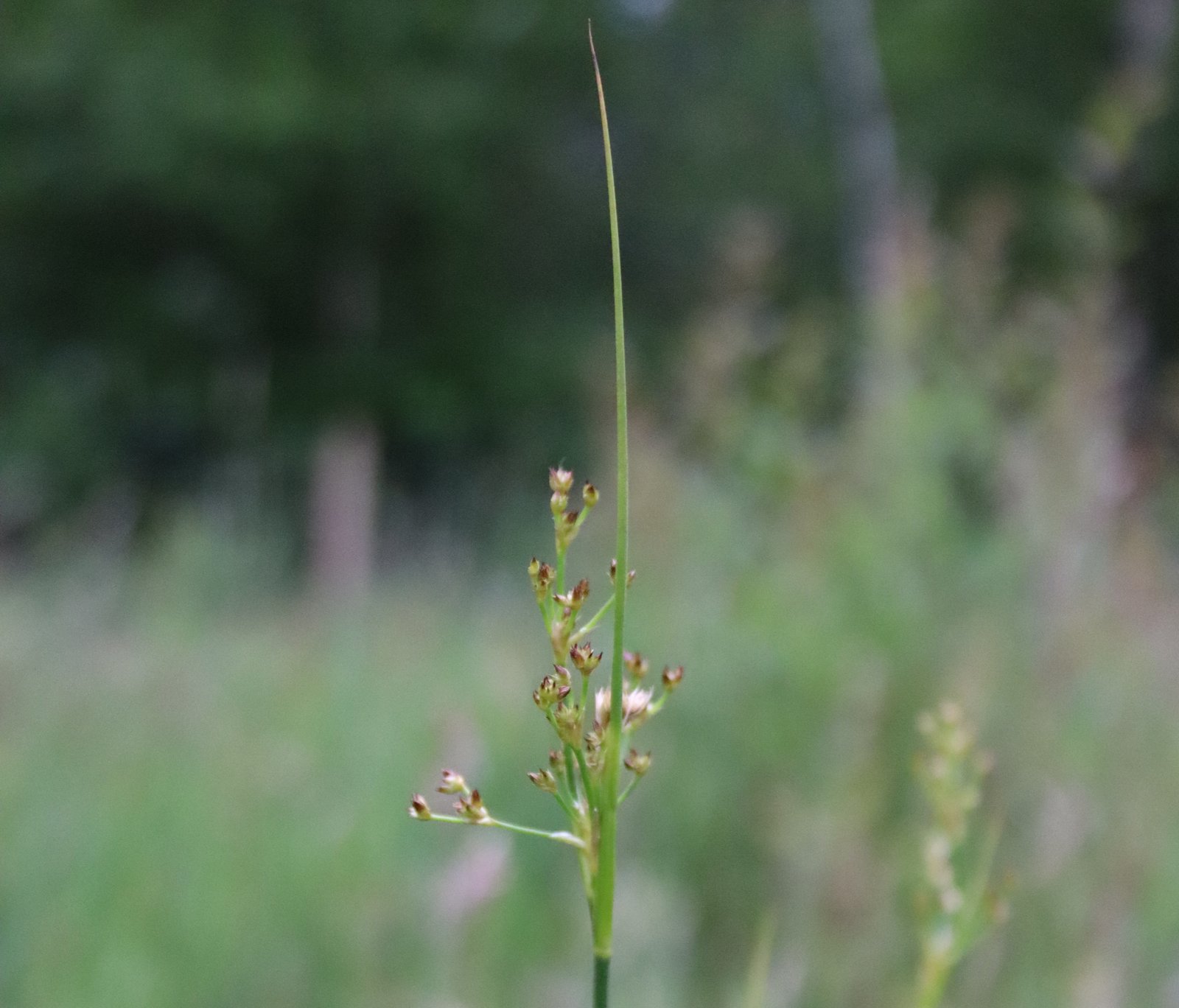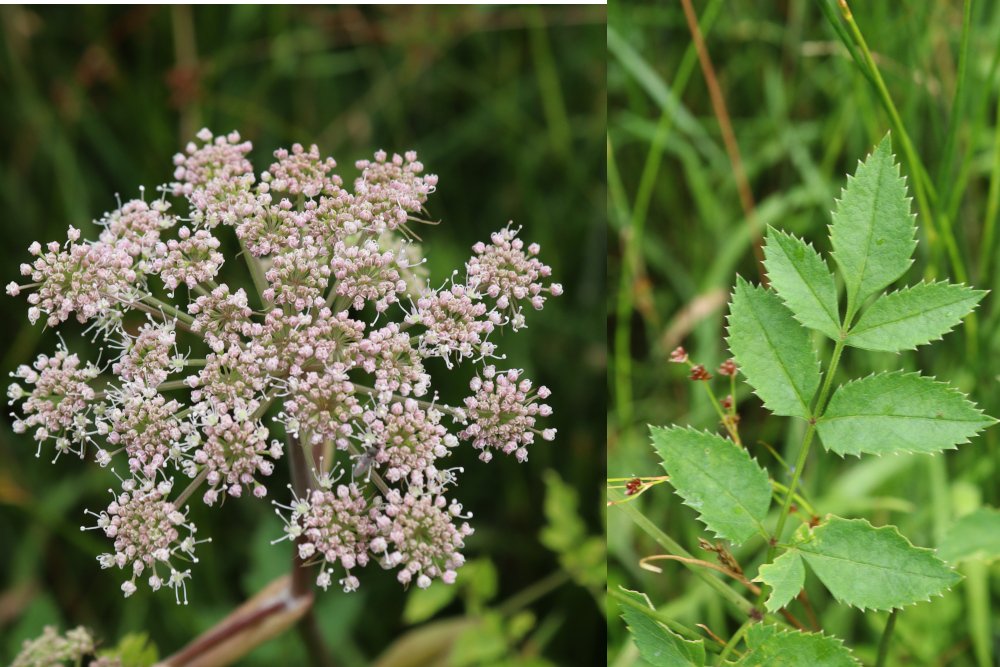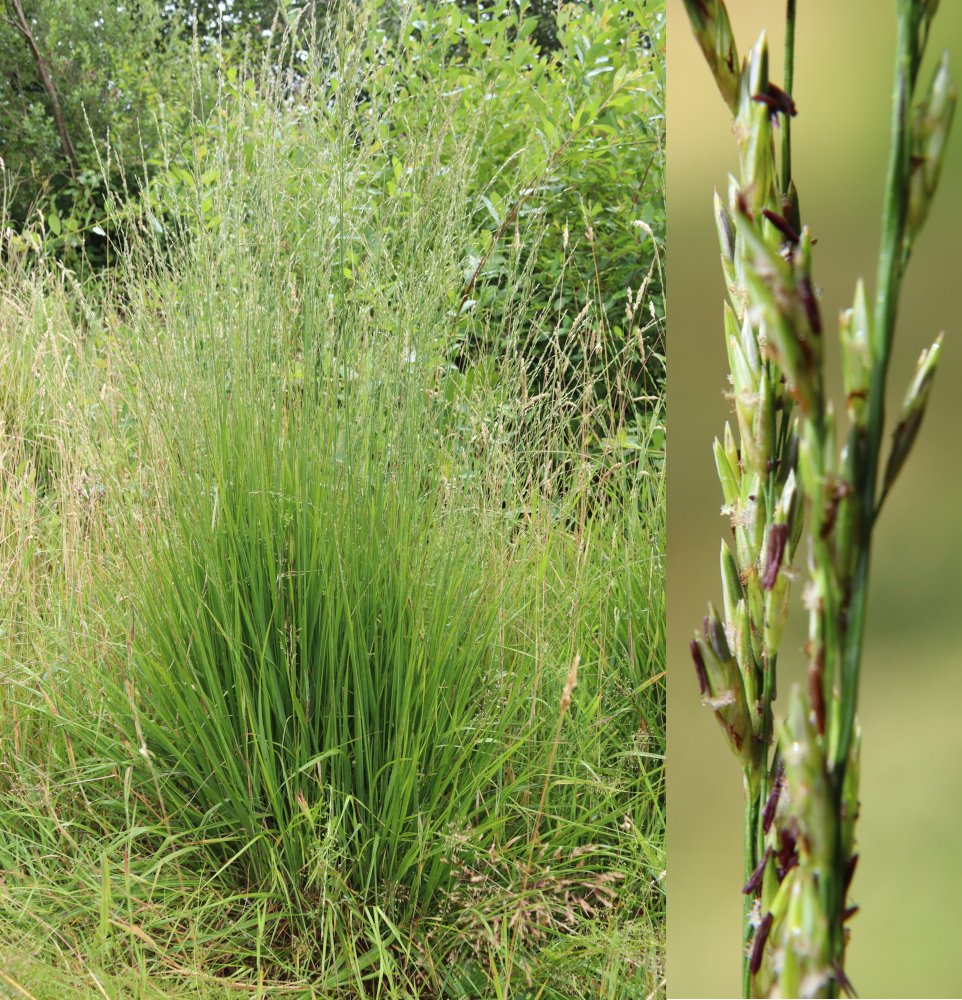Culm Grassland is a type of species-rich moorland which is formed where heavy clay overlies carboniferous rock, forming an impervious barrier to water with the land tending to be flat or gently sloping. This results in boggy, acidic land of low agricultural value, with a wide variety of flora, which is rich in habitats for many endangered species. The modernisation of agriculture, with government grants for draining land has destroyed over 92% of this valuable habitat since the mid 20th century. Culm Grassland is a habitat unique to North Devon and North Cornwall.
The flora tends to be dominated by purple moor grass or rush. Wildflowers thrive on the culm, including devil’s bit scabious, birdsfoot trefoil and a number of species of orchids. Some scrub is an important element of the habitats contained within the culm, but if not managed correctly, culm grassland can get overrun with scrub or soft rush and lose much of its habitat value.
It is not really accurate to describe culm as a type of habitat. It is really a patchwork of different habitats which combine to provide a multitude of niches for different species, many of which require more than one habitat to survive. A bird for instance may require open grassland to feed in, but scrub as a nesting site. It is the combination of these different habitats which make the culm so valuable.
As well as its habitat value, culm grassland acts as a natural method of flood management. The vegetation and the peaty soil that forms, act like a sponge, soaking up the water when it rains and slowly releasing it into the rivers below. This prevents the sudden surges of water that result from heavy downpours. The area of culm that Devon Culm is prioritising, mainly feeds the Little Dart river, which is a tributary of the Taw river. As such, restoring the culm in this area will reduce flooding along the route of the two rivers, all the way to Barnstaple. This will become more important over time as climate change brings us more dramatic weather events.
Culm Species Identification
Bog Asphodel Narthecium ossifragum

- Height up to 40 cm
- Flowers approx 15-20mm across
- Leaves up to 15cm long
- Flowering June – August
Photo by Tom Parsons
Bog pimpernel Anagallis tenella

- Height 5-15cm
- Flowers approx 8-10mm across
Flowering June – August
Photo by Tom Parsons
Bugle Ajuga reptans

- Foliage height 5-8cm
- Flower height 10-15cm
- Flowering April – July
Photo by Tom Parsons
Common valerian Valeriana officinalis

- Height 1-1.5m
- Flowering June – August
Cross-leaved heath Erica tetralix

- Height up to 60cm
- Flowers 5-10mm in length
- Leaves grow in whorls of 4 which is where it gets its name.
- Flowering June – October
Photo by Peter Llewellyn
Devil’s-bit scabious Succisa pratensis

- Height up to 1m
- Flowers 15-25mm across
- Flowering July – September
Fen bedstraw Galium uliginosum

- Height 5-30cm
- Flowers 1.5-3mm across
- Flowering July-August
Photo by Peter Llewellyn
Greater bird’s-foot trefoil Lotus pedunculatus

- Height 20-80cm
- Flowers 10-18mm long
- Flowering June-August
Great Burnet Sanguisorba officinalis

- Height up to 1.5m
- Flowering July-September
Photo by David Cann
Hemp agrimony Eupatorium cannabinum

- Height up to 1.5m
- Flowering July – September
Sharp-flowered rush Juncus acutiflorus
- Tepals 1.5 – 2.5mm
- Stem 40-120cm
- Flowering July – September
Jointed rush Juncus articulatus

- Height 15-50cm
- Flowering June – September
Lesser skullcap Scutellaria minor

- Height up to 25cm
- Flowers 6-10mm long
- Flowering July – October
Lesser spearwort Ranunculus flammula

- Height 50-100cm
- Flowering May – August
Photo by Peter Llewellyn
Lousewort Pedicularis sylvatica

- Height 15-20cm
- Flowering April – September
Photo by Peter Llewellyn
Marsh bedstraw Galium palustre

- Height 10-50cm
- Flower Width 3-4mm
- Flowering June – August
Marsh cinquefoil Potentilla palustris

- Height up to 40cm
- Flower Width up to 25mm
- Flowering June – July
Photo by Scott Saunders
Marsh marigold Caltha palustris

- Height 30-45cm
- Flower width 20-55mm
- Flowering March – April
Photo by Peter Llewellyn
Marsh pennywort Hydrocotyle vulgaris

- Height 10cm
Photo by Louis Parkerson
Marsh valerian Valeriana dioica

- Height 40cm
- Flower width 4.5mm
- Flowering April – June
Photo by Peter Llewellyn
Marsh violet Viola palustris

- Height 5-20cm
- Flowers 10-13mm
- Flowering April – May
Photo by Peter Llewellyn
Meadow thistle Cirsium dissectum

- Height 15-50cm
- Flower width 20-25mm
- Flowering June – August
Photo by Louis Parkerson
Meadowsweet Filipendula ulmaria

- Height 50-100cm
- Flowering June – September
Southern marsh orchid Dactylorhiza praetermissa

- Height 30-50cm
- Flowering June – August
Photo by Peter Llewellyn
Heath Spotted Orchid Dactylorhiza maculata

- Height 40-60cm
- Flowering May – July
Purple Loosestrife Lythrum salicaria

- Height 60-120cm
- Flower width 20mm
- Flowering June – October
Photo by Peter Llewellyn
Ragged Robin Silene flos-cuculi

- Height 30-60cm
- Flowering April – June
Rough Hakwbit Leontodon hispidus

- Height 10-50cm
- Flowering May – October
Photo by Peter Llewellyn
Saw-wort Serratula tinctoria

- Height up to 1m
- Flowering July – September
Photo by Peter Llewellyn
Slender St John’s Wort Hypericum pulchrum

- Height 20-50cm
- Flower width 12-18mm
- Flowering June – August
Sneezewort Achillea ptarmica

- Height 60cm
- Flower width 8-16mm
- Flowering June – August
Tormentil Potentilla erecta

- Height 10cm
- Flower width 7-11mm
- Flowering June – September
Water mint Mentha aquatica

- Height 30-40cm
- Flowering June – August
Wavy-leaved St John’s Wort Hypericum undulatum

- Height 45-55cm
- Flower width 7-10cm
- Flowering August – September
Photo by Peter Llewellyn
Wild Angelica Angelica sylvestris

- Height 1-2m
- Flowering June – September
Whorled Caraway Carum verticillatum

- Height 30-50cm
- Flowering July – August
Photo by Peter Llewellyn
Purple Moor-Grass Molinia caerulea

- Tussock Forming
- Purple flowering
Glaucous Sedge Carex flacca

- Height 10-40cm
Photo by Peter Llewellyn
Flea Sedge Carex pulicaris

- Height 10-30cm
Photo by Peter Llewellyn
Oval Sedge Carex leporina

- Height up to 1m
Photo by Peter Llewellyn
Carnation Sedge Carex panicea

- Height 30-40cm
Photo by Peter Llewellyn
Star Sedge Carex echinata

- Height 15-30cm
Photo by Peter Llewellyn
Cotton-grass Eriophorum angustifolium

- Flowering April – July
Donating to Devon Culm
Paypal Donations
For PayPal donations, please click on the button.
This button can also be used to pay by debit or credit card.
Donations by Bank Transfer
For larger donations, or if you don’t use PayPal, you can donate by bank transfer.
Our bank details are:
Bank: The Cooperative Bank
Account Name: Devon Culm
Sort Code: 08-92-99
Account Number: 67265260
When donating by bank transfer, please fill in this form if you are a UK taxpayer and would like us to collect the gift aid on all qualifying donations you have made in the last 4 years and all subsequent donations until you notify Devon Culm otherwise.
Wills and Other Donations
If you would like to leave a gift to Devon Culm in your will, please leave it to:
Charity Name: Devon Culm
Registered charity number: 1198963
Address:
Bulworthy Project
Rackenford
Tiverton
Devon
EX16 8DL
Please help us to protect and enhance habitats on the culm measures. The more money we raise, the more effective we can be at promoting biodiversity and abundance.
If you would like to discuss a gift to Devon Culm, please contact us using the contact details at the bottom of this page.
If you would like to be kept up to date with the progress of Devon Culm, please fill in the form below so that we can contact you.
